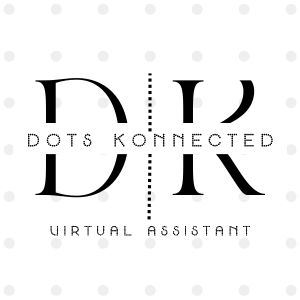If you’ve just hired a virtual assistant (VA) or are considering bringing one on board, you’re on the right track to streamline your operations and boost your productivity. However, to fully benefit from this valuable resource, it’s essential to integrate them effectively into your business. Here are some key tips to help you get started:
1. Establish Clear Business Goals
Before your VA can start making a difference, they need to understand your business objectives. Without clear goals, your virtual assistant won’t have the direction needed to support you effectively. Here’s how to get started:
- Identify Key Objectives: Determine the primary goals you want your VA to help you achieve.
- Task Delegation: Decide which tasks you want to delegate. This can include administrative duties, customer service, social media management, or any other repetitive tasks.
- Alignment with Strategy: Ensure these tasks align with your overall business strategy to maximize their impact.
2. Determine Your Budget
Hiring a VA can be a cost-effective solution, but you still need to determine if it fits within your budget. Here are some things to consider:
- Cost Savings: Remember, you save on overhead costs like benefits and office space.
- Value Assessment: Balance the cost with the value your virtual assistant brings. Investing in a more experienced VA might cost more initially, but can save time and improve efficiency in the long run.
- Affordable Rates: Look for a VA whose rates fit within your budget while still meeting your quality expectations.
3. Choose the Right Type of VA
Selecting the right VA is key for a successful partnership. Consider the following:
- Duration of Need: Are you looking for long-term support or a short-term solution for a specific project?
- Skill Set: Do you need a specialist in a particular area (e.g., digital marketing, accounting), or are you looking for a generalist who can handle a variety of tasks?
- Experience Level: Would you prefer someone with extensive experience, or are you willing to train a less experienced assistant who shows potential and willingness to learn?
4. Provide Thorough Training and Onboarding
To ensure your VA can assist you effectively, provide comprehensive training and a structured onboarding process:
- Document Your Processes: Create detailed documentation of your business processes and workflows. This will serve as a valuable reference for your VA and help them understand how to perform tasks to your standards.
- Structured Onboarding: Develop an onboarding plan that includes an introduction to your business, your goals, and specific training on the tasks your assistant will handle.
- Continuous Support: Offer ongoing training and support. Regular check-ins and feedback sessions can help address any issues early and ensure your VA remains aligned with your business objectives.
5. Leverage Your VA for Business Growth
A well-integrated VA can be instrumental in growing your business. They can help you streamline operations, improve efficiency, and free up your time to focus on strategic initiatives. Here’s how to make the most out of your virtual assistant:
- Process Improvement: Work with your VA to identify and document your business processes. This can help streamline operations and make it easier to onboard future employees.
- Task Management: Delegate repetitive and time-consuming tasks to your assistant, allowing you to focus on high-impact activities.
- Feedback and Optimization: Continuously provide feedback and look for ways to optimize how your VA works within your business.
By following these steps, you can effectively incorporate a virtual assistant into your small business, enhancing productivity and setting the stage for growth. With clear goals, a well-defined budget, the right VA, and proper training, you’re well on your way to making the most of this valuable resource.
Ready to hire a virtual assistant for your business? If so, schedule a FREE 30-minute consultation with me today.

